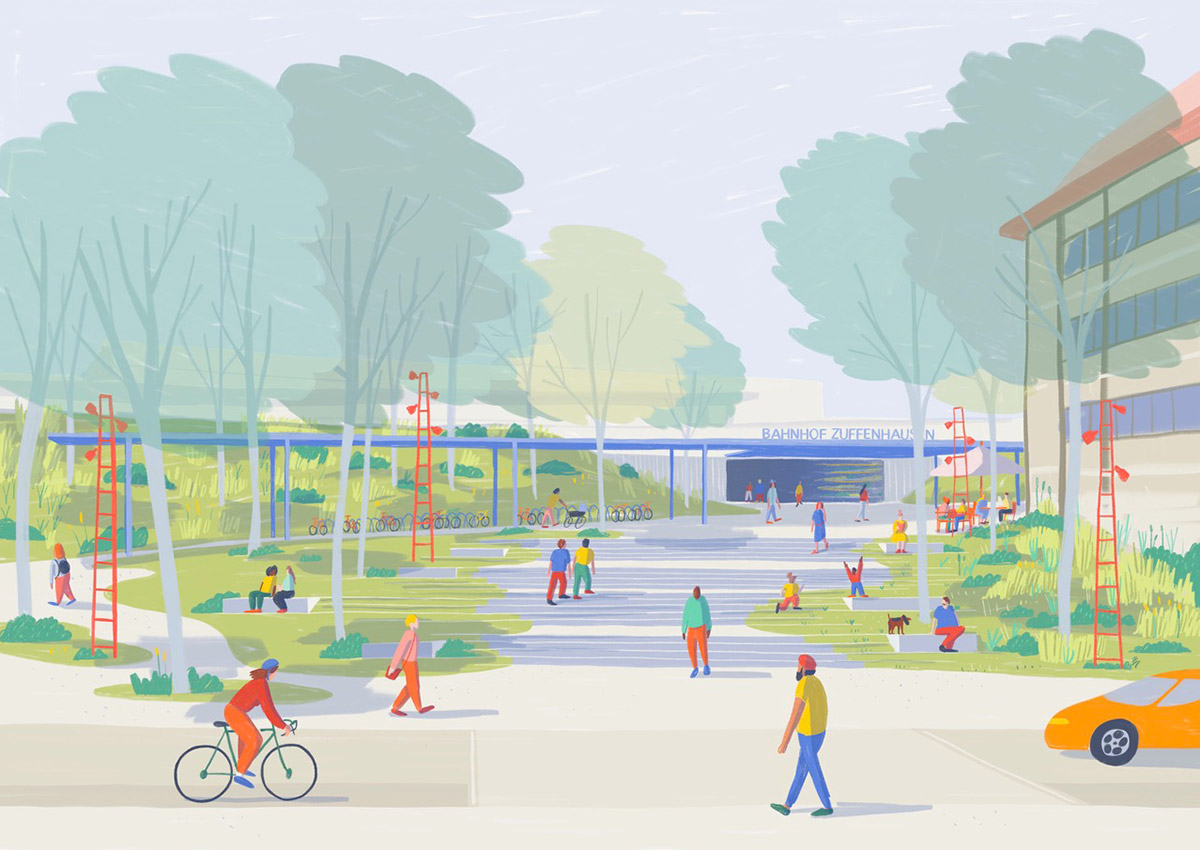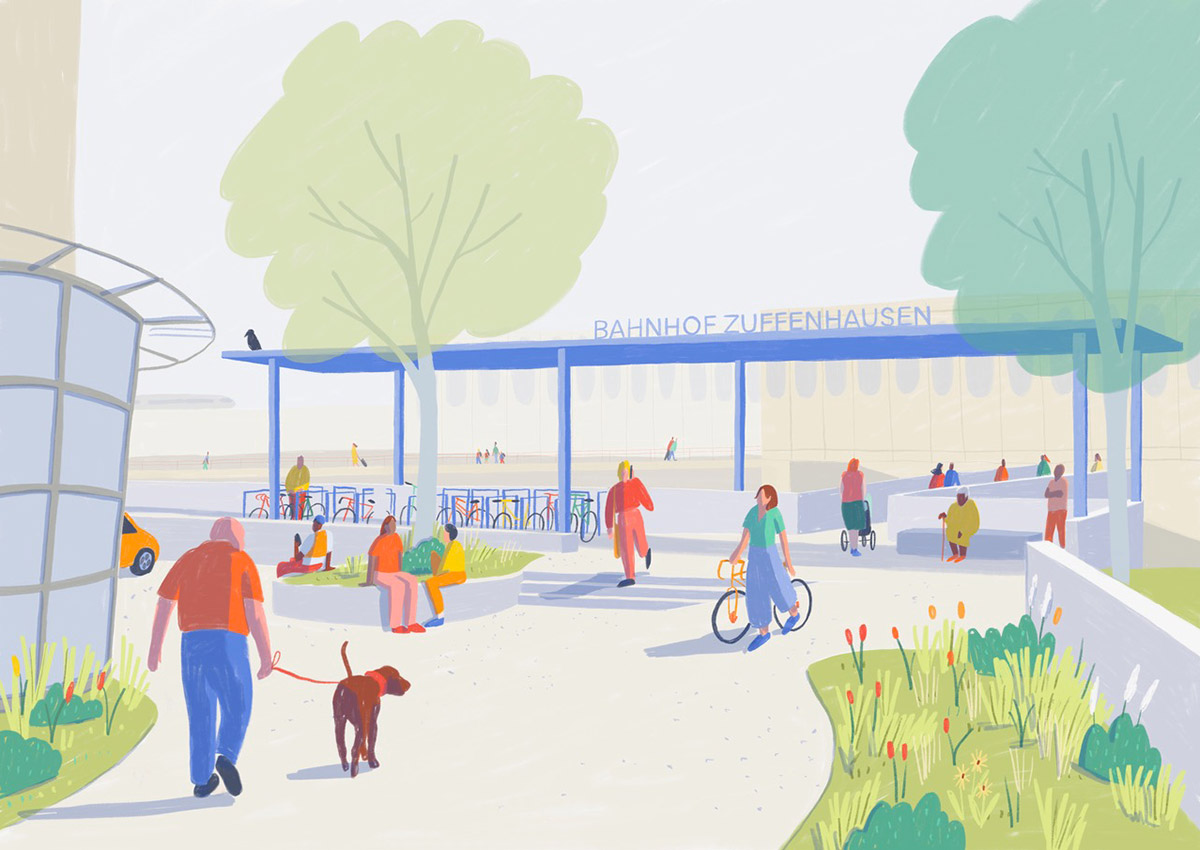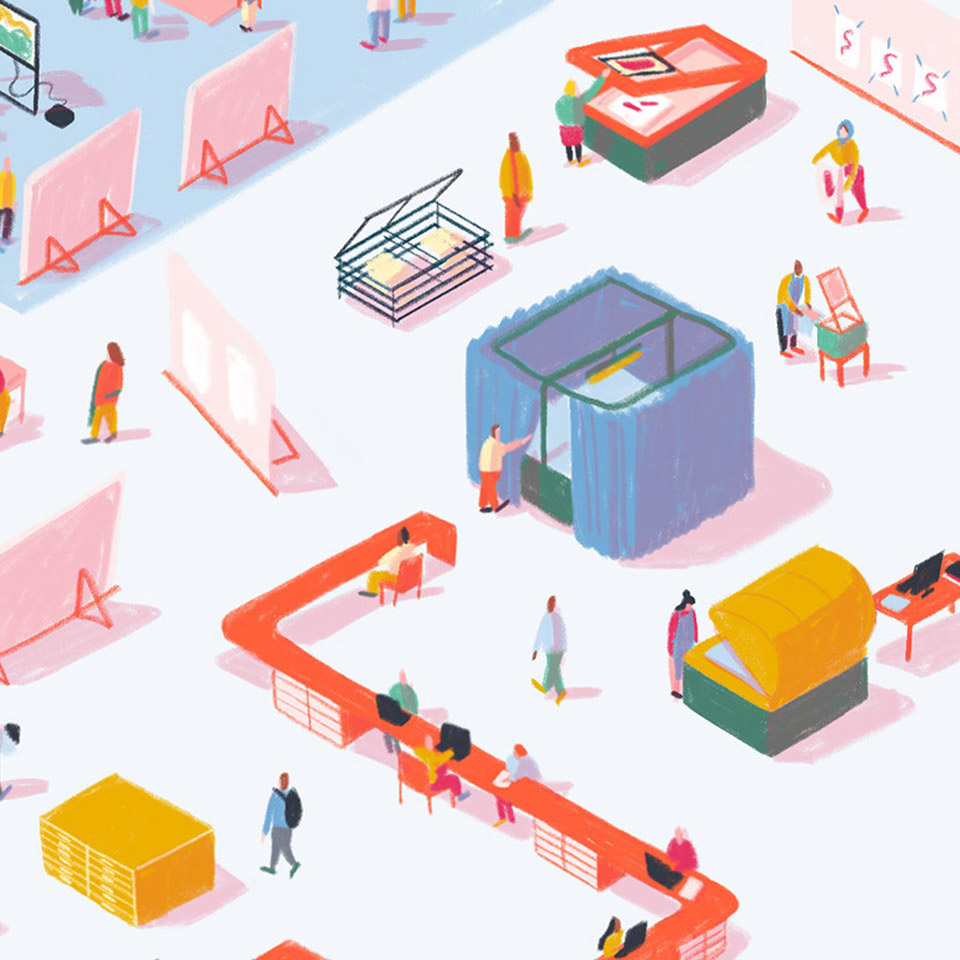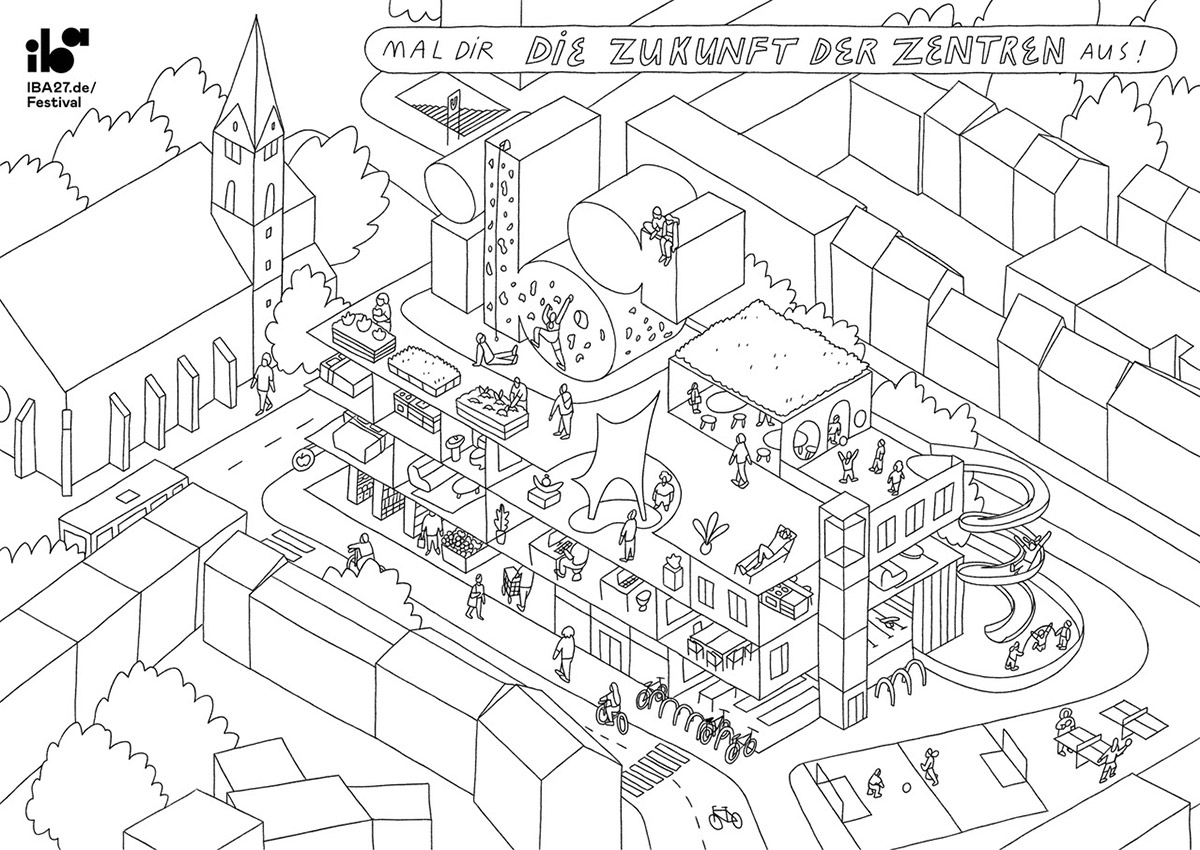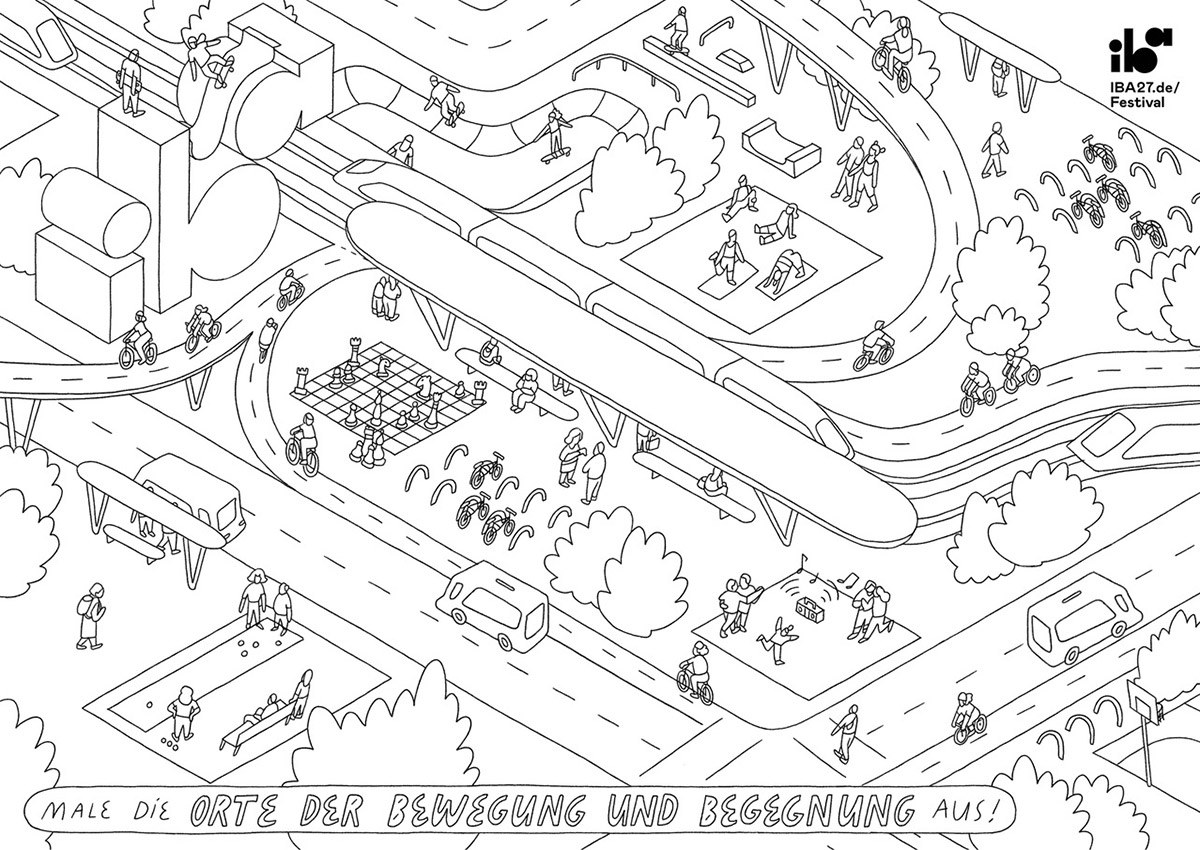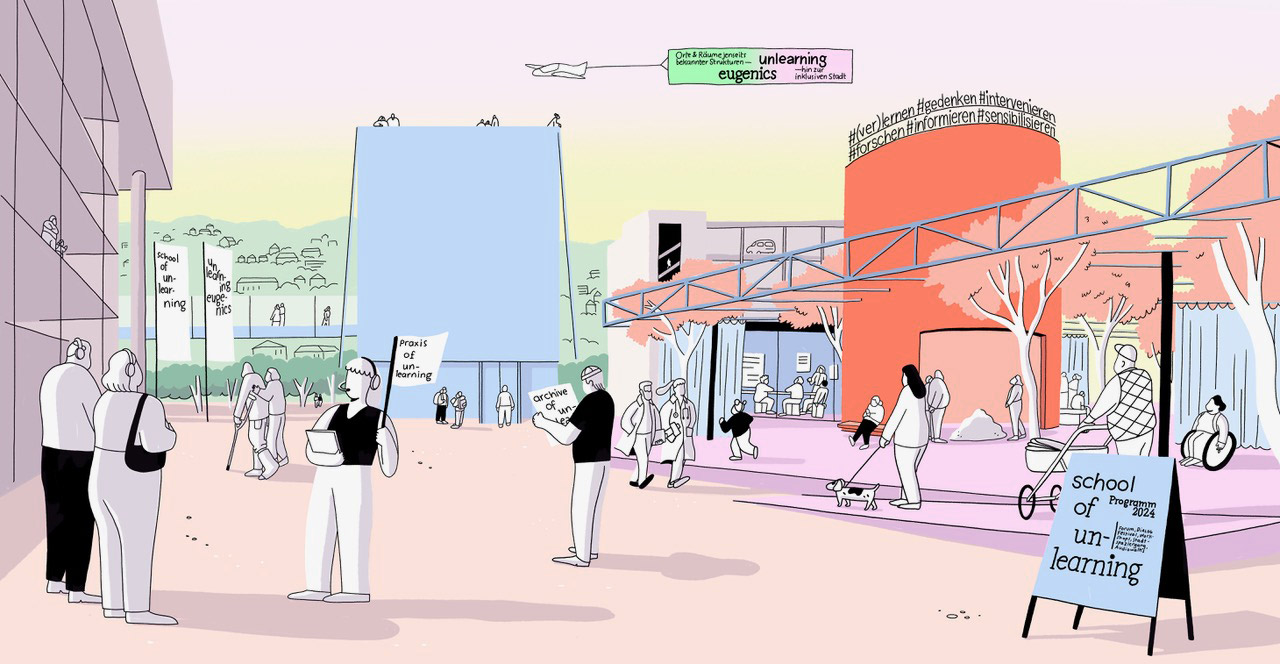23/018
Cristina Estanislao
Illustrator
Berlin

«There is no architecture without urbanism.»
«There is no architecture without urbanism.»
«There is no architecture without urbanism.»
«There is no architecture without urbanism.»
«There is no architecture without urbanism.»
Please, introduce yourself…
I'm Cristi. I am an illustrator, dibujante and visual story-teller based in Berlin. Drawing is basically all I do: I work with architects and city planners illustrating projects and competitions. I draw for newspapers, magazines and exhibitions. I am also very interested in print-making and comics. I studied architecture and Urban Planning in Stuttgart and I am currently pursuing a Master’s in Illustration at the Berlin University of the Arts (UdK), while freelancing on the side.
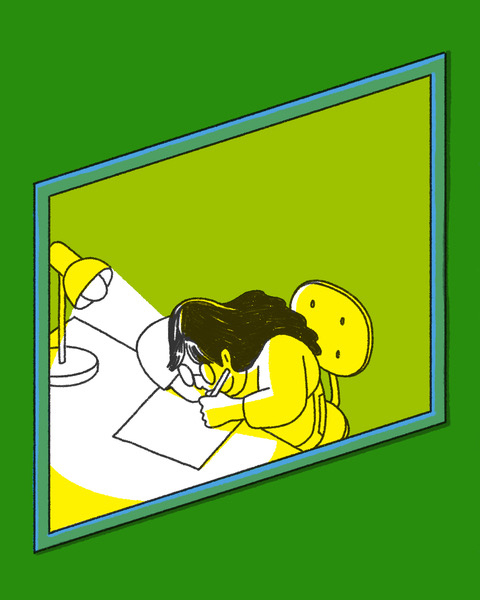
Portrait Cristina Estanislao
How did you find your way into the field of architecture?
Not too many years ago, when I was deciding what degree to pursue, I was very undecided on whether to go after a career in illustration or architecture & urban planning. Drawing had been a passion for a long time and I had the habit of drawing in a sketchbook pretty much everywhere I went. A very wise relative (my father) gave me the best piece of advice I have gotten: if you study architecture, you can still become an illustrator afterwards, but if you study illustration you will never know whether you could have been a great architect. I now know for certain the world is a better place without me actually building anything!
What are your experiences founding your own practice?
Founding a freelance practice takes lots of time, energy and patience. I am in many ways still in the process of building up my small business, given that I shifted careers from architecture to illustration only four years ago.
It all began during my bachelor studies. Back then I was mostly interested in cities and urban planning—I did most of my projects in the urban planning department of my university, SuE, at University of Stuttgart. Whenever I could I used my drawing skills to explain my projects. I took all the drawing courses that were offered, I never used a rendering program in my life, I drew a comic for an assignment once and for our thesis my friend Annika Sieblitz and I decided to make an illustrated storybook. My classmates and professors knew me for my drawings. When I finished my degree Prof. Dr. Martina Baum, head of SuE, and Markus Vogl asked me to illustrate some competitions for their studio, Studio Urbane Strategien. That was the moment I began freelancing and realized I might be able to earn money doing what I love.
Later, short after the pandemic, while I worked on expanding my illustration portfolio, I applied for a part-time job at Studio Malta. They are a young urban planning studio in Stuttgart doing lots of very diverse and exciting projects in the fields of city planning, architecture and design, with a focus on participative processes. They were looking for someone to support them with the graphic component of their work. Run by Aida Nejad, Jan-Timo Ort, Marta Toscano and Aaron Schirrmann, Studio Malta allowed me to expand my portfolio of illustrations focusing on the built environment and participative urbanism.
While working at Studio Malta, I began to send out my portfolio to Magazines and Newspapers, as I became more interested in editorial projects. It took some time, lots of e-mails, and some lucky connections to finally start getting jobs in the editorial world. I began working for smaller publications and I have now had the pleasure of working for clients such as ZEIT in Germany and El País in Spain. There are still many dream clients on my list that I hope to be able to work for soon.
What is your favorite tool to design/create architecture and why?
While most of my client work is digital (I use Procreate on my IpadPro12”), my favorite tool is and will probably always be a very fine black pen.
What is the essence of architecture for you personally?
The people that inhabit it.
What needs to change in the field of architecture according to you? How do you imagine the future?
So many changes are warranted in the field of architecture and city planning, I could not possibly list them out. But to summarize: less bling bling and throwing money away at ‘starchitects’ and more investment on human scale, sustainable design. I also believe every architect should be an urban planner. The separation of the fields of architecture and urban planning has led to great catastrophes in the built environment. Architecture schools everywhere in the world should make urban planning a requirement. There is no architecture without urbanism.
Whom would you call your mentor?
I have had many great mentors. In the field of architecture and planning they are Martina Baum, Markus Vogl, Hanna Noller and Sebastian Klawiter, and Cristiana Da Silva. In the field of illustration they are Lea Dohle, Javirroyo, and Henning Wagenbreth. In everything in between, my amazing parents and friends. In everything in between, my amazing parents, siblings and friends.
How do you communicate/present Architecture?
With many lines and colors!
Creating Images to visualize the ideas of architects and designers seems to be a delicate thing. How important is the relationship and communication between you and your clients?
Making an image that transports the viewer into an imagined, hopeful world is one of my favorite things to do. I always strive to understand my clients’ project ideas as best as possible, the most important thing is to get the atmosphere or Genius Loci of that place across. Sometimes I am asked to draw concepts instead of specific spaces, an even bigger challenge I am always happy to undertake.
What does it take to create a good architectural image?
The best architectural images tell a good story. The viewers are able to see themselves in that picture, and imagine themselves joyfully inhabiting the imagined place.
If there were one skill you could recommend to a young architect to study in depth at architecture school: what would it be and why?
Draw, daw, draw. So many architects neglect drawing and do not realize it is the most practical tool they could ever develop. To be able to explain your ideas in the blink of a eye, with only a few traces, will save you many hours battling with your computer (and spare you many unnecessarily long meetings!). Also, most people don’t realize anyone can learn to draw. The only talent a person has is the will to practice.
What person/collective or project do we need to look into right now?
Lately comic artists are who inspire me the most, as I would like to attempt my first graphic novel for my Master thesis project at UdK next year. Some of my favorite comic artists include Marjane Satrapi, Anna Haifisch, Max Baitinger, Marijpol, David Clowes, Paco Roca and Ulli Lust. While these are not really related to the field of architecture, your readers might find some graphic inspiration in their work!
Project 1
IBA’27
Festival
Stuttgart
I recently completed a series of Coloring pages for the IBA’27 Festival in Stuttgart. A couple of years ago I also created three illustrations on the future of mobility for them.
Project 2
Orte & Räume
Erlangen
2023
Illustration for winning entry: Orte & Räume jenseits bekannter Strukturen —unlearning eugenics —hin zur inklusiven Stadt | Erlangen 2023 | Commissioned by: Studio Sebastian Klawiter & Studio LEK (Johannes Sack) & Fanti Baum & Lotta Bartoschewski & Katharina Holland"
Website: cristina-estanislao.com
Instagram: @cristi.estanislao
Photo Credits: © Cristina Estanislao
Interview: kntxtr, kb, 12/2023
